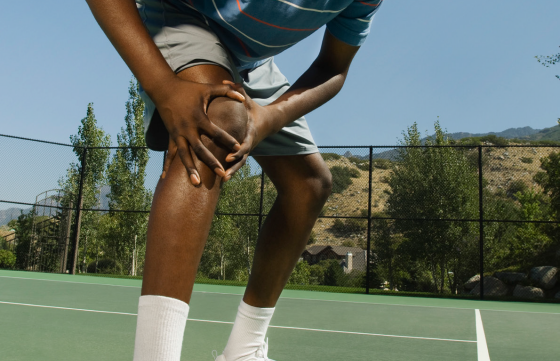Latest News & Blog
Andrew Taylor gives advice on knee injuries associated with tennis
Bone and Joint Centre Consultant Orthopaedic Surgeon, Mr Andrew Taylor, gives advice on knee injuries associated with tennis.
Tennis is played by thousands of people of all age groupson a weekly basis and the risk of injury is extremely low although, as with all sports, knee injuries can occur. They can generally be defined as either overuse or acute/traumatic injuries. Overuse injuries occur generally over time due to the stress on muscles, joints and soft tissues without proper time for healing. Symptoms may not be present at the time of playing and are often noticed after tennis.
The most common overuse injury would be patella tendinopathy (Jumpers Knee) which affects the patella tendon between the underside of the patella (kneecap) and the tibia (shin). In the area just underneath the patella tendon, there are microscopic tears and degeneration in the tendon and this is a common complaint in tennis players due to the explosive muscle contractures needed for the sprinting, jumping and quick changes of direction during tennis.
Typically, there is a sharp pain in the tendon below the kneecap which is present during jumping, sprinting, serving and change of direction after running wide to reach a ball and often there is an aching pain after finishing playing tennis. Simple analgesia and icing is necessary in the first instance and, if symptoms persist, then assessment by a physiotherapist/sports injury surgeon would be beneficial with confirmation of diagnosis via ultrasound or MRI scanning. The majority of patients will settle following an appropriate rehabilitation programme under the guidance of a physiotherapist with eccentric quadriceps loading. If symptoms persist, then intervention can be considered with various ultrasound guided procedures (dry needling, injection of blood, platelet rich plasma) and surgery is rarely indicated.
The menisci (one each side of the knee) are shock absorbers in the knee and are often referred to as ‘cartilages’. They may be torn with an acute injury or, often in older tennis players (as part of a degenerating joint), a tear can occur without injury when symptoms are often again noted after play. The initial management is with analgesia and /or physiotherapy and, if symptoms persist, particularly if they are mechanical in nature (clicking, catching, locking or giving way) then arthroscopic (keyhole) surgery may be indicated. Persistent symptoms generally occurring for over six weeks would warrant assessment by a physiotherapist and/or orthopaedic surgeon.
Ligament injuries in tennis are fortunately uncommon though when they do occur they mainly affect the medial collateral ligament (ligament on the inner side of the knee) or the anterior cruciate ligament (inside the knee). Patients will notice acute pain at the time of the injury, generally when turning on a fixed foot and they may feel or hear a ‘pop’. Marked swelling is generally associated with tears of the anterior cruciate ligament. Medical assessment is recommended.
Anterior cruciate ligament injuries have no potential to heal and surgical reconstruction would be indicated if instability in the knee continues following a physiotherapy rehabilitation programme.

